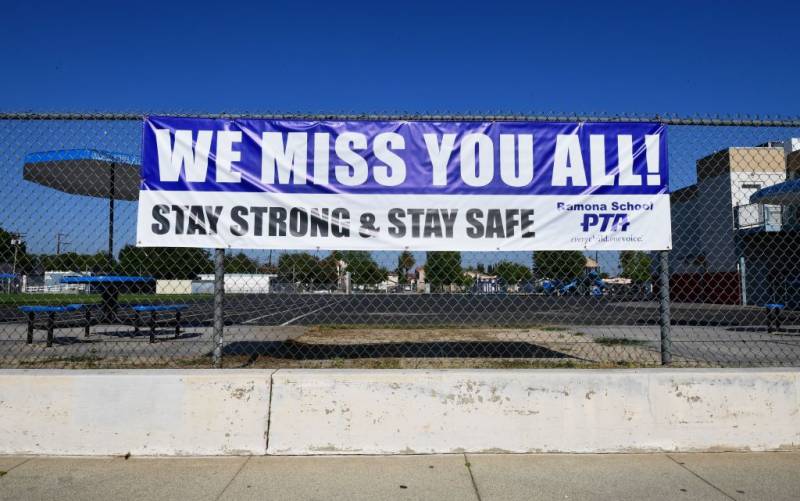“I do think that if school had to open tomorrow, most of our districts would open with distance learning, and that decision I think is a good one,” he said.
Thurmond acknowledged that “conditions have changed dramatically” since the state Department of Education issued its school opening guidance last month, and applauded districts for making tough, prudent choices. “We know that in many communities throughout our state, we’re seeing high rates of infection in the community,” he said.
At least two dozen school districts have so far announced that distance learning will be their default instruction mode this fall. Although just a tiny fraction of the more than 1,000 districts in the California, the list comprises some of the state’s largest school districts, including the two biggest — in Los Angeles San Diego. Most districts and charter schools across the state have yet to announce how they will open.
Many of the districts choosing distance learning are still holding out hope they will be able to open for in-classroom instruction sometime in the fall. Oakland Unified, for example, will open via remote learning on Aug. 10 in what officials have said they hope will be an “opening phase” lasting four weeks.
Long Beach’s decision was especially notable given that its semester is not scheduled to begin until Aug. 31, nearly seven weeks away.
Jill Baker, who took over as superintendent on July 1, explained that “this decision was a hard one to make,” saying the district would offer remote instruction to all students until at least Oct. 5.
“COVID-19 cases continue to increase, hospitalizations are on the rise and the percentage of positive tests is also climbing,” she said. “In full protection of our district staff and students, we have decided that beginning with online instruction and closely monitoring the health data as Oct. 5 approaches will be our best next step.”
On the other hand, Santa Ana Unified’s starting date, of Aug. 10, is less than a month away, which put additional pressure on the district to make a decision. “The district will pivot entirely to distance learning to start the upcoming school year out of concern for the safety and well-being of the entire school community,” Superintendent Jerry Almendariz explained in a video message. “This decision comes as the number of COVID-19 cases throughout Santa Ana, and across California and the rest of the country, continues to climb at an alarming rate. Thus, a full distance learning model is the safest option for our Santa Ana students, parents and staff.
Some districts that are planning to operate mostly online in the fall have said they're considering providing in-person instruction to small groups of high-needs students, if it's safe to do so — an effort to minimize the huge learning loss inflicted by the pandemic.
Other school districts, including some of the state’s largest, are still planning to offer what is called “hybrid instruction,” which involves a mix of distance learning and in-person classes.
For example, Elk Grove Unified, near Sacramento, the state’s fifth-largest district, announced last week that it will offer two models for the fall term — “transitional learning” and “full distance learning.” The first approach, the district’s superintendent Chris Hoffman explained in an online letter, refers to “in-person instruction to the greatest extent possible under existing health conditions and guidelines regarding social distancing, sanitation, and personal protective equipment.” The second will be “a balance of live, virtual instruction and recorded, previously posted lessons.”
Baker, from Long Beach, said the announcements that Los Angeles and San Diego districts made this week to go remote impacted her district’s decision, but wasn't the only factor.

